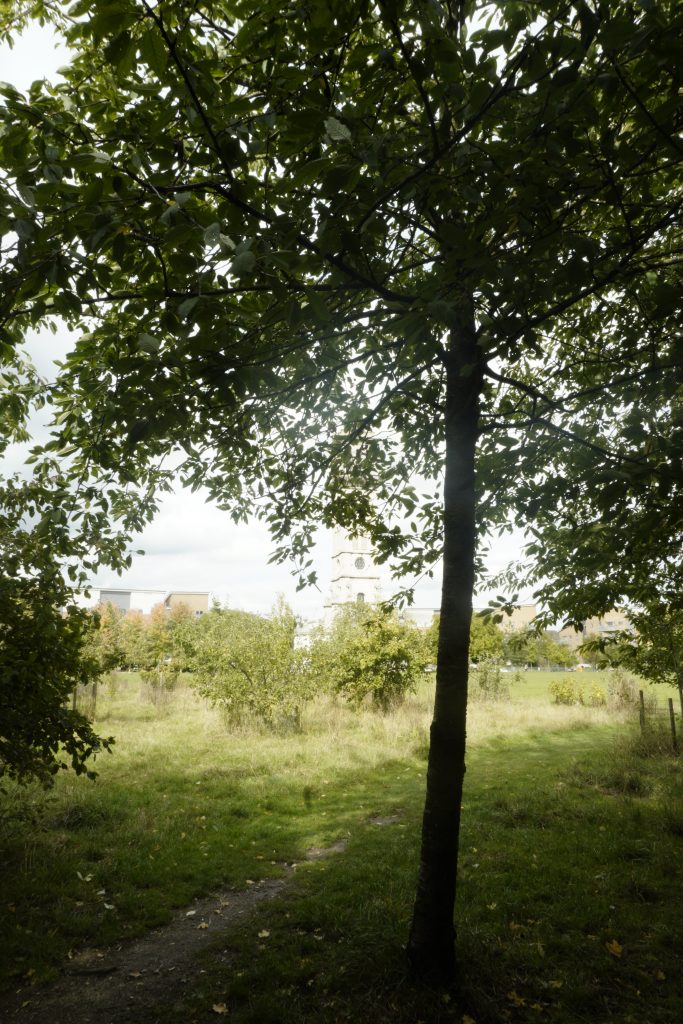Psychogeography reveals that space is not only physical but also a site of psychological and emotional experience. This inspired me to explore how spaces influence people’s emotions and behavior. I focused on a park, and as I walked through it, I noticed traces of human activity: trash on the ground, graffiti on benches, footprints in the dirt. These traces made me wonder about the past and what people might have done here. During the first week, I documented these observations through photography, collage, mapping, and cyanotype.
Inspired by Michael Rock’s (2009) article “Fuck Content,” which argues that design should emphasize form over content, I began to reflect on whether my methods captured something new and expressed it effectively. Similarly, Jason Bruges’ work in public spaces and interactive design highlights the role of form in shaping experience. This encouraged me to explore how traces of human activity could be creatively expressed.To push this further, I visited the park daily, focusing on objects left behind by people. I took notes and made sketches, recording changes in location and shape, reflecting on how mundane objects could carry deeper meanings in our interaction with space. As Rock (2009) notes, “Design that changes the way we look at the world is often found in the service of the most mundane content.” Although the changes in discarded items seem insignificant, they experience subtle transformations daily, hidden and unnoticed. In response, I used my shoes as a measurement unit to map the “tourist route” of trash, creating a personal system for investigating and documenting these movements. I believe the form itself can convey messages as complex and meaningful as traditional content.
As my research developed, Michel Foucault’s (2001) article further inspired my research. Foucault’s “archaeological” method explores how knowledge and ideas evolve. This led me to investigate the park’s history. Over time, it served various purposes, with each phase leaving invisible marks. Some came for fresh air, some for work, others to protest injustice. By adopting this ‘archaeological’ lens, I saw how rubbish traces symbolize changing relationships between human behavior and historical contexts. This gave me a sense of wonder as I continued to document my research, adding more details, and expressing my present experience through design. In the future, I plan to further expand my “maps” and explore more suitable mediums to present my investigation, possibly in the form of a comic book.
In this investigation, I tried to compensate for the mundanity of the objects through creative expression and explore the site more deeply using archaeological methods. However, I am also aware of the challenges. Could overemphasis on form obscure the social or environmental significance of the objects I documented? Could the design lose its substance? This will motivate me to focus more on the tension between form and content in the future, and how to balance the objective and historical with the subjective and emotional.
Reference list
Foucault, M. (2001) The Order of Things: An Archaeology of the Human Sciences. London: Routledge.
Rock, M. (2009) ‘Fuck content’. Available at: https://2×4.org/ideas/2009/fuck-content/ (Accessed: 17 October 2024).

Leave a Reply